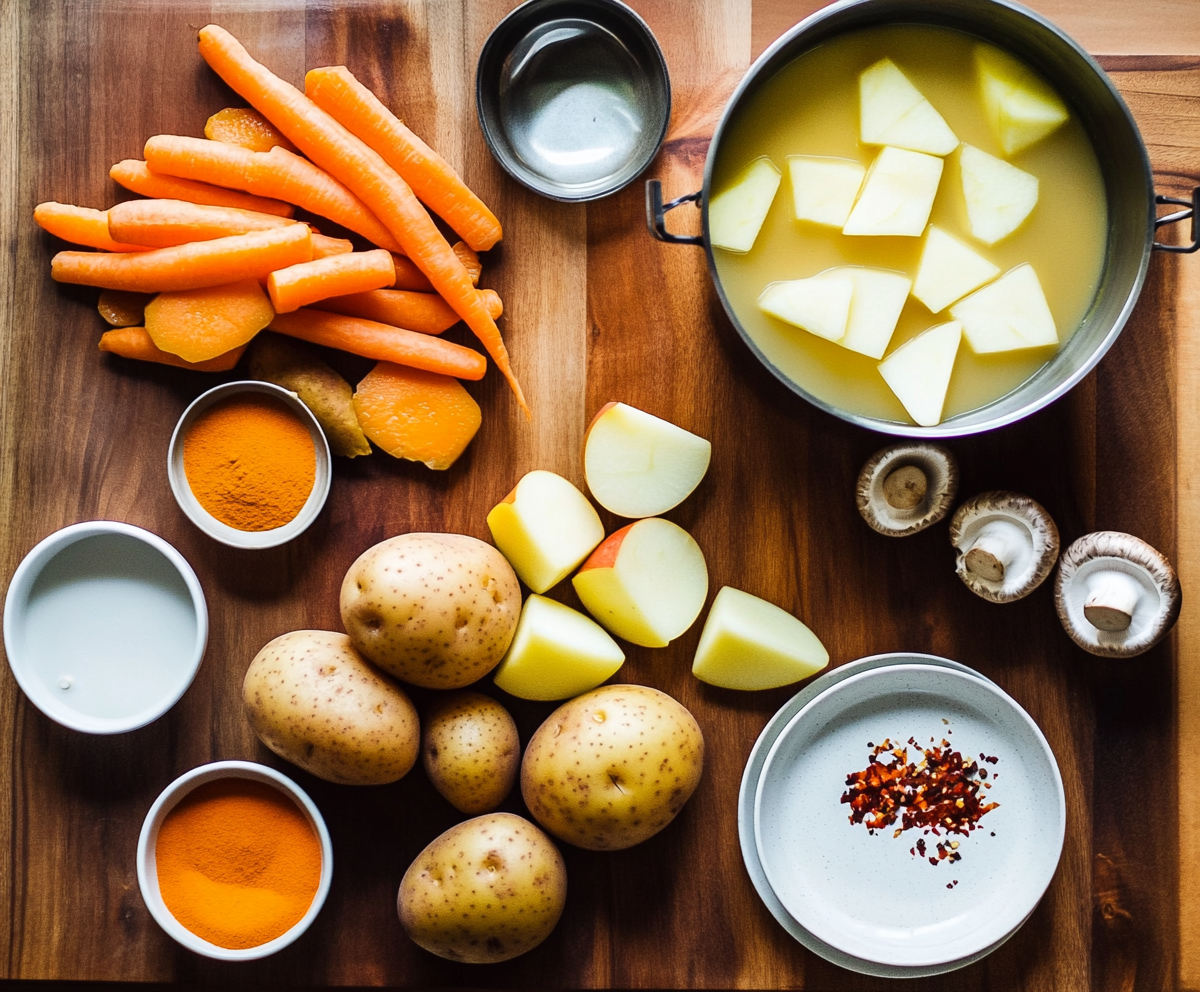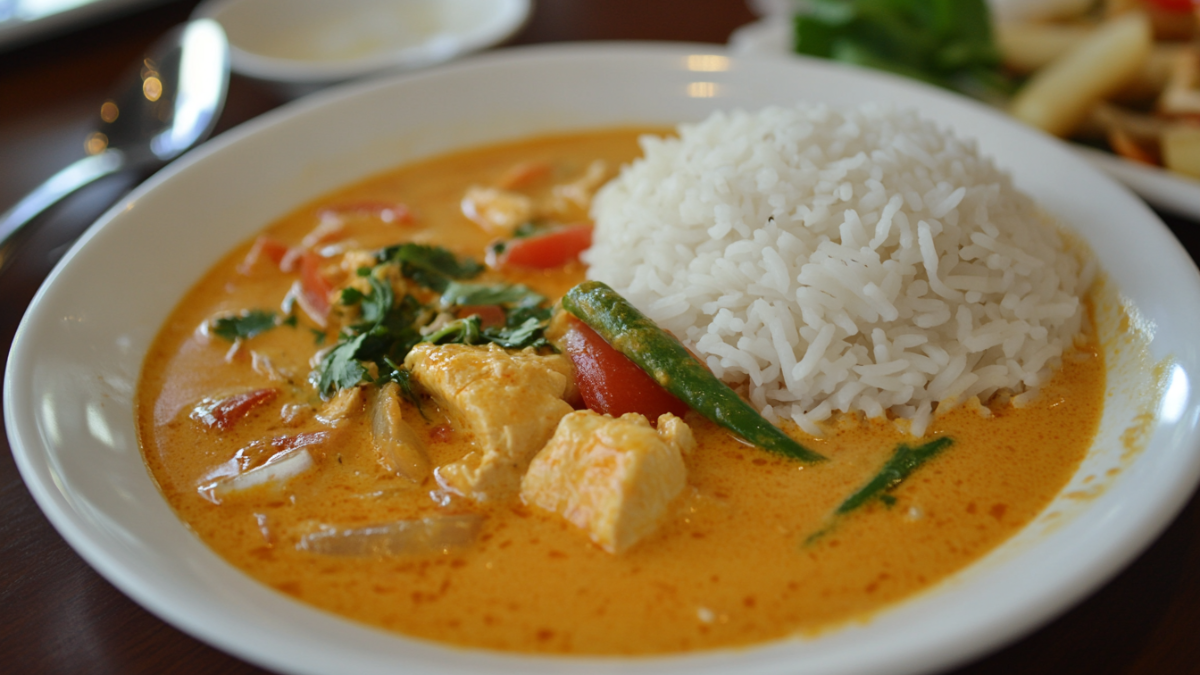Golden Curry Recipe: A Step-by-Step Guide
Golden Curry is a beloved Japanese dish that combines rich, savory flavors with a touch of sweetness. It’s a comforting meal that’s perfect for any occasion, whether you’re cooking for family or enjoying a cozy dinner at home. In this guide, we’ll explore the origins, ingredients, and step-by-step process to make this flavorful dish.
Table of Contents
The History of Golden Curry Recipe
Golden Curry is a product of culinary evolution, blending international influences with traditional Japanese cuisine. Its story begins in the late 19th century, during the Meiji era, when Japan opened its borders to the West. British-style curry, adapted from Indian flavors, was introduced by the British Royal Navy and quickly became popular among Japanese sailors and soldiers for its simplicity and nutrition.
Over time, curry was adapted to local tastes. Japanese chefs began thickening the curry with flour and using a milder spice mix, making it more palatable for Japanese families. By the mid-20th century, companies like S&B Foods introduced pre-made curry roux blocks, revolutionizing home cooking. The “Golden Curry” brand emerged as a leader, offering a convenient way to prepare this hearty dish. Today, it remains a staple in households across Japan and abroad, embodying the fusion of Japanese ingenuity and global flavors.
What Is Golden Curry?
Golden Curry is a type of Japanese curry known for its mild, slightly sweet flavor and thick, creamy texture. Unlike Indian curries, which are typically spicier and more complex, Japanese curry is often made using a pre-made roux block. Learn how to create another comforting dish like this with our Comforting Pastina Soup Recipe.
Japanese curry has roots in British cuisine, brought to Japan during the Meiji era. Over time, it was adapted to suit local tastes, eventually becoming a staple in Japanese households. The Golden Curry brand, introduced in the 1960s, is one of the most popular options for making this dish at home.
Ingredients for Golden Curry Recipe
Here’s what you’ll need to create a delicious Golden Curry:

Main Ingredients
- 2 medium-sized potatoes, peeled and diced
- 2 carrots, sliced into chunks
- 1 large onion, chopped
- 1 pound of protein (chicken, beef, or tofu)
- 3 cups of water
Curry Roux
- 1 box of pre-made Golden Curry roux
- Optional: 1 grated apple for added sweetness
Optional Add-Ins
- 1 cup of mushrooms, sliced
- 1 tablespoon of soy sauce for enhanced umami
- 1 teaspoon of chili flakes for extra heat
If you’re a fan of hearty meals, you might also enjoy this Old-Fashioned Vegetable Beef Soup Recipe.
Golden Curry Recipe for Every Occasion
One of the best things about Golden Curry is its versatility—it’s perfect for any occasion, whether you’re hosting a dinner party or enjoying a quiet meal at home. Here are some ideas for when and how to serve this delicious dish:
- Weeknight Dinners:
Golden Curry is quick and easy to prepare, making it an excellent choice for busy weeknights. Pair it with steamed rice or bread for a filling, no-fuss meal. - Lunchboxes:
The thick, flavorful sauce of Golden Curry travels well, making it ideal for packed lunches. Simply store it in an airtight container with a side of rice, and it’ll stay warm and delicious. - Potlucks and Parties:
Serve Golden Curry in a slow cooker to keep it warm during gatherings. Offer toppings like fresh cilantro, pickled ginger, or fried onions so guests can customize their plates. - Special Occasions:
Elevate your presentation by serving Golden Curry in individual ramekins or on decorative plates. Pair it with sides like Old-Fashioned Dinner Rolls or a crisp salad. - Comfort Food:
On cold or rainy days, Golden Curry is the ultimate comfort food. Its rich, hearty flavors are sure to warm you up and lift your spirits.
Whether you’re feeding a crowd or cooking for one, Golden Curry is a versatile dish that suits every occasion.
Mastering the Perfect Curry Consistency
The consistency of Golden Curry is key to its appeal. Achieving the perfect texture—neither too thick nor too thin—requires a few simple techniques:
- Start with the Right Ratio:
Follow the recommended water-to-roux ratio on the package. Too little liquid can make the curry too thick, while too much water can dilute the flavor. - Simmer Slowly:
Allow the curry to simmer gently over low heat. This helps the flavors meld together and thickens the sauce naturally. - Add a Thickening Agent:
If your curry is too thin, dissolve a teaspoon of cornstarch in cold water and stir it into the pot. Let it simmer for a few more minutes until it reaches the desired consistency. - Adjust as Needed:
For a creamier texture, add a splash of milk, coconut milk, or cream. To thin out a curry that’s too thick, simply add a little more water or broth. - Test Before Serving:
Before serving, spoon a small amount of curry onto a plate to check its texture. The sauce should coat the back of a spoon without dripping off.
Mastering the consistency of Golden Curry ensures a perfectly balanced dish every time.
How to Make Golden Curry Recipe
Follow these simple steps to prepare your Golden Curry:
- Prepare the Ingredients
- Wash and chop the vegetables into bite-sized pieces.
- Cut your protein of choice into even chunks for consistent cooking.
- Sauté the Ingredients
- Heat oil in a large pot over medium heat.
- Add the onions and cook until they are golden and soft.
- Stir in the protein and cook until lightly browned.
- Simmer the Curry
- Add the potatoes, carrots, and water to the pot.
- Bring to a boil, then reduce the heat and let it simmer for 15–20 minutes, or until the vegetables are tender.
- Add the Curry Roux
- Break the Golden Curry roux block into pieces and stir it into the pot.
- Let it dissolve completely, stirring frequently to prevent lumps.
- Serve and Enjoy
- Serve the curry over steamed white rice.
- Garnish with fresh parsley or pickled ginger for an extra burst of flavor.
Popular Variations of Golden Curry Recipe
You can customize this dish to suit your taste:
- Vegetarian Option
Replace the meat with tofu, tempeh, or extra vegetables like zucchini and bell peppers. - Seafood Version
Use shrimp or fish instead of traditional proteins for a lighter option. - Spicy Curry
Add extra chili flakes or a splash of hot sauce to increase the heat level.
Looking for more ideas? Check out our Shrimp Salad Sandwich Recipe for another creative twist.
Traditional Japanese Sides for Golden Curry Recipe
While Golden Curry is a star on its own, pairing it with traditional Japanese sides can elevate your meal. Here are some classic accompaniments:
- Steamed Rice:
White rice is the most common pairing for Golden Curry. Its neutral flavor complements the rich, savory sauce perfectly. - Miso Soup:
A bowl of warm miso soup adds a light, comforting element to balance the meal. - Pickled Vegetables:
Serve tangy pickles like takuan (pickled daikon) or umeboshi (pickled plums) on the side to cut through the curry’s richness. - Japanese Potato Salad:
Creamy and slightly tangy, Japanese-style potato salad makes a hearty side that pairs well with curry. - Tempura:
Crispy tempura vegetables or shrimp can add a delightful crunch and variety to your plate.
Adding these traditional sides creates a well-rounded, authentic Japanese dining experience.
Tips for the Perfect Golden Curry Recipe
- Consistency: Add more water if the curry is too thick, or simmer longer to reduce if it’s too thin.
- Balance of Flavors: Use grated apple or honey to add sweetness if the curry tastes too salty.
- Storage: Leftovers can be stored in the fridge for up to three days. Reheat gently to preserve the texture.
Pair this dish with our Old-Fashioned Dinner Rolls for a complete meal.
Tips for Storing and Reheating Golden Curry Recipe
Golden Curry is a fantastic make-ahead dish that tastes even better the next day. Here’s how to store and reheat it properly:
- Cooling:
Let the curry cool to room temperature before storing it. This prevents condensation and keeps the sauce thick. - Refrigerating:
Store the curry in an airtight container in the fridge for up to three days. Make sure it’s sealed tightly to preserve its flavor. - Freezing:
For longer storage, freeze the curry in individual portions. Use freezer-safe containers or bags, and label them with the date for easy tracking. - Reheating:
Reheat curry gently on the stovetop over low heat, stirring frequently to prevent burning. If it’s too thick, add a splash of water or broth. - Refreshing the Flavor:
Add a pinch of fresh spices or a dash of soy sauce to revive the flavors after reheating.
With these storage tips, you can enjoy Golden Curry whenever you like, with minimal effort.
Frequently Asked Questions (FAQs)
What is Golden Curry Recipe made of?
Golden Curry is typically made with a pre-made roux block, vegetables, protein, and water. The roux contains a mix of spices, flour, and fats.
How spicy is Golden Curry Recipe?
The spice level is mild, making it suitable for all palates. You can adjust the heat by adding chili flakes or spicy condiments.
Can I make Golden Curry without a roux block?
Yes! You can make a homemade roux using butter, flour, and a blend of curry spices.
How do I store and reheat leftovers?
Store leftovers in an airtight container in the fridge for up to three days. Reheat on low heat to maintain the creamy texture.
Is Golden Curry gluten-free?
Most roux blocks contain flour, so they are not gluten-free. Look for specialty gluten-free curry roux or make your own at home.
Conclusion
Golden Curry is a flavorful, versatile dish that brings comfort and warmth to any table. With its rich history and endless customization options, it’s no wonder this recipe has become a household favorite. Try making it today, and enjoy the delightful combination of savory, sweet, and spicy flavors!

